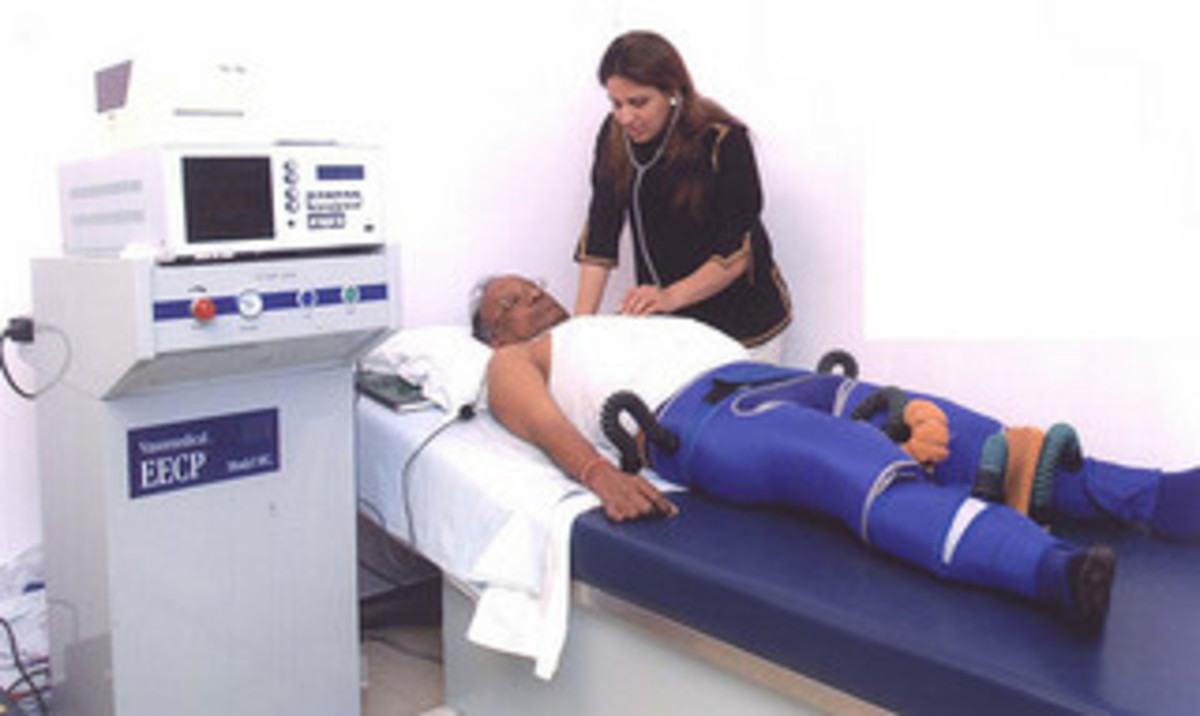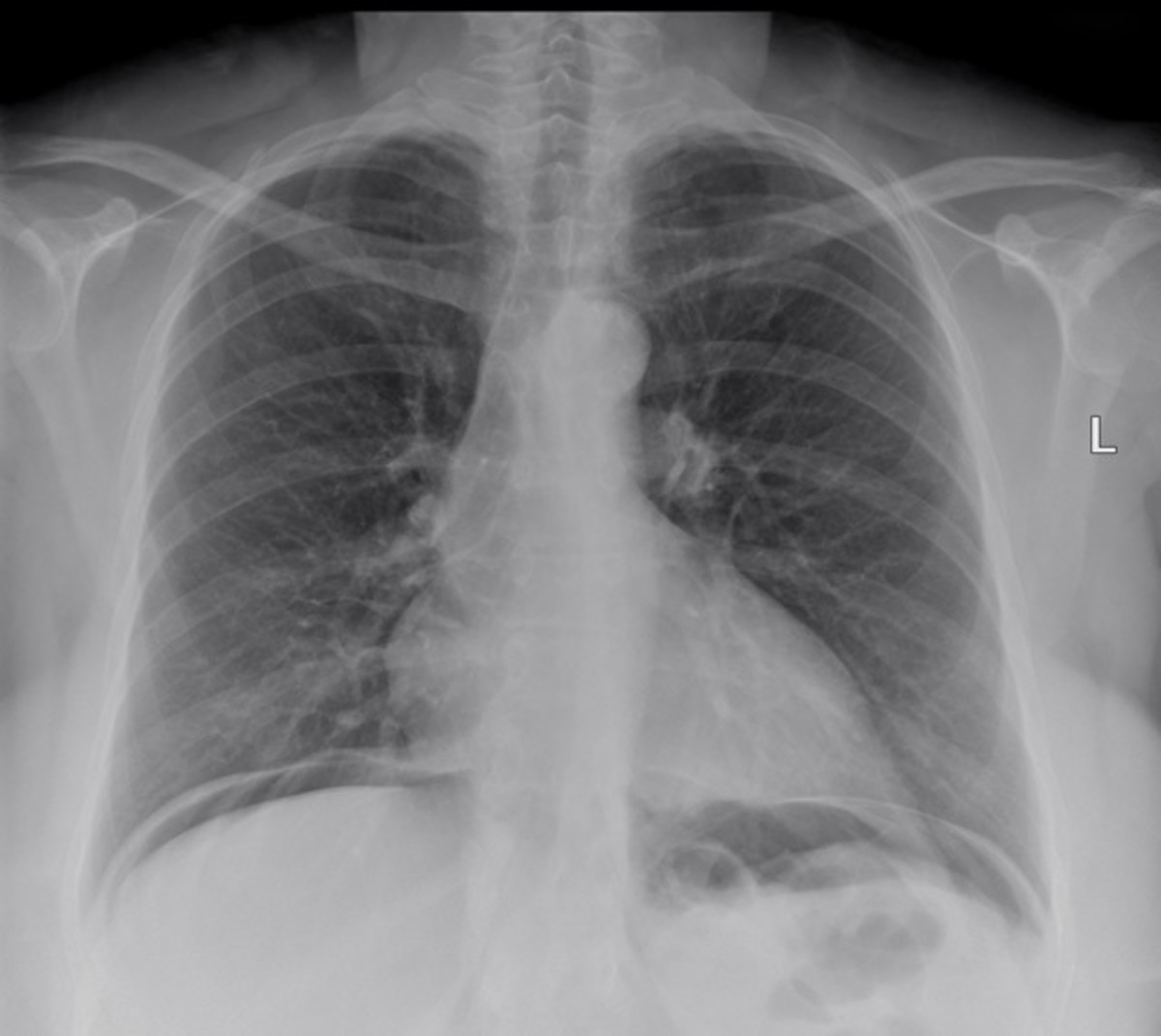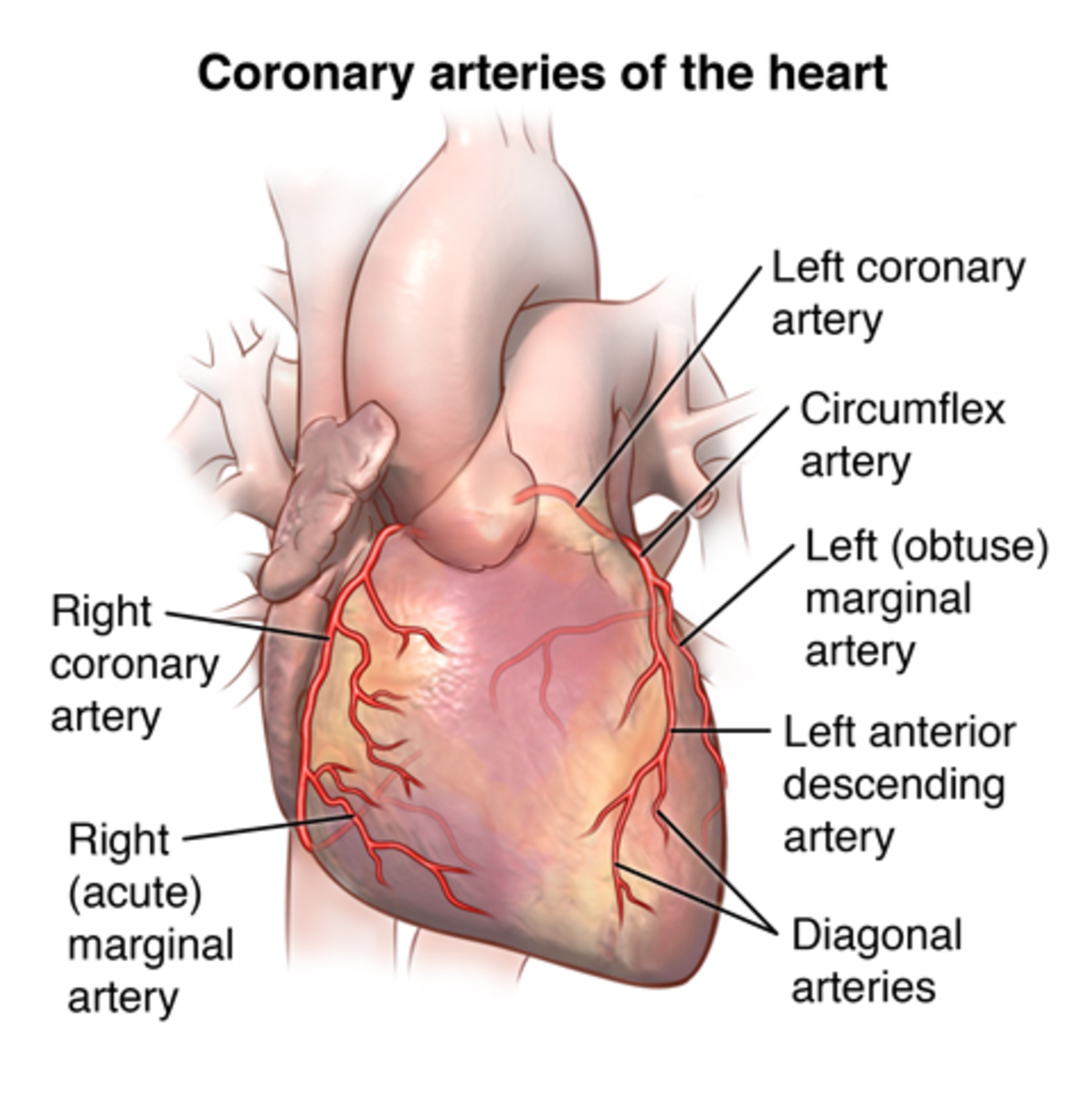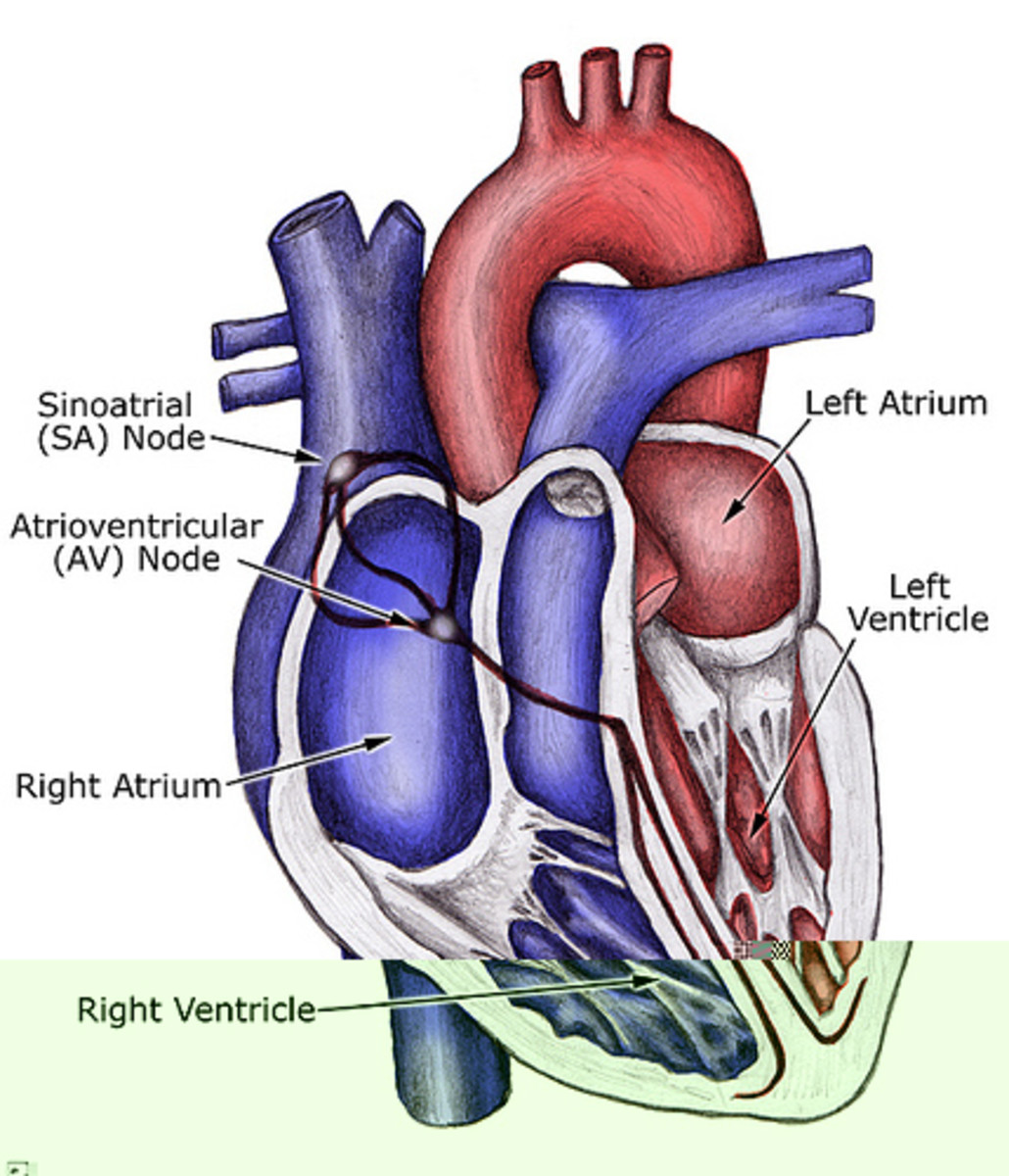Surgical Treatment of Angina
Angioplasty and bypass surgery have for the first time given doctors the opportunity to do something concrete about the supply, rather than the demand, side of the angina equation. The aim of both procedures is to increase the flow of blood to regions previously starved of oxygen because of narrowing of the coronary arteries.
If you are offered either of these treatments, you will first undergo a coronary angiograph, an X-ray which outlines the coronary arteries to determine exactly where the problem lies in the heart.
Angioplasty. Angioplasty is performed under sedation, but not under general anesthesia, so carries less operative risk. It involves inserting a thin catheter (a flexible hollow tube) through an artery in the leg all the way back up the aorta into the affected coronary artery, all the time under X-ray control. This is the easiest route for reaching the heart.
The tip of the catheter is passed through the narrowed segment of coronary artery. Just short of the tip the catheter forms a tiny balloon, which is inflated once it is exactly opposite the narrowed segment of artery. This compresses the area of atheroma, and widens the artery. After angioplasty, the flow of blood through that artery is usually multiplied many times over.
Doubts about angioplasty in the beginning have now been cast aside, as, after nearly 20 years of its general use, the success rates have been soaring. It has more than a 90 per cent success rate in coronary arteries, and many patients feel much better immediately after it has been done. Even angioplasty, however, has its problems: in about one case in 100, the catheter may block the vessel. This means that angioplasty must always be done in full operating theatre, so that an emergency coronary bypass operation can be done if necessary.
Bypass surgery. In bypass surgery a vein is taken from the leg or an artery from the inside of the chest wall, and inserted around the narrowed segment of coronary artery. The blood then flows through the new channel, rather than through the coronary artery, to the heart muscle beyond. The immediate result is much better flow of blood, and therefore glucose and oxygen, to the previously 'starved' area.
Bypass surgery is usually employed where there are multiple small blockages of one, two or three coronary arteries, and where the blockages are in vessels too small for angioplasty to be possible. Of course, it needs to be done under a general anaesthetic, and carries the risks, small as they now are, of any major operation.
More than two-thirds of bypass operations and angioplasties are still highly successful, with a wide open coronary circulation, six months later and beyond. The figures are improving all the time. Where they have been necessary, repeat angioplasties and surgery have been just as successful.
Many people have now enjoyed 20 years of very full active lives after their bypass operations and are coming up to their twentieth anniversary of their angioplasties. Their lives have been changed beyond their belief. The benefit cannot be put down entirely, however, to their surgery. The ones who really did best were those who were determined to change their lives.
They stopped smoking, controlled their drinking, changed their eating habits, exercised more, lost their excess weight, and adopted a wholly new style of life. Their hospital treatment offered them the chance to start life again - and they took it. This must be the lasting, definitive message for every angina patient.
Stents. Stents are tiny tubes, made up of a material that looks like a wire mesh. They can be placed in a narrowed segment of an artery using a catheter similar to the ones used for balloons. They are springy enough to keep open, and the open mesh system allows the new inside 'skin' of the artery to grow into it to make the smooth surface needed to keep the artery healthy. Many surgeons use stents instead of angioplasty or bypass in selected patients.
- Rehabilitation for Heart Attack
The key to bringing 'heart' patients back to normal life, therefore, is rehabilitation, both physical and mental. The process should start in hospital, where you are encouraged to be mobile as early after the... - Misconceptions about Obesity and Heart Disease
Some common misconceptions about food and eating should be put to rest. The first has to be about obesity. Fat people are more likely to have a heart attack than thin people - but the relationship is not...








